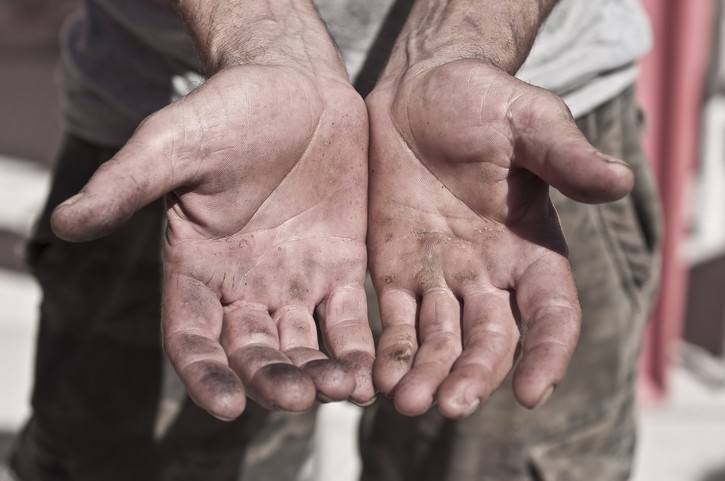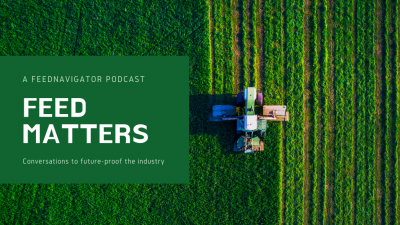Reports from VIV Asia
Cargill looks to improve livelihoods of poor farmers

The idea was hatched on a bumpy ride back from a CSR project in southwestern China a couple of years ago.
The van’s occupants, namely Cargill executives, on-the-ground staff and NGO workers, bounced up and down inside. They were already amped up on adrenalin after witnessing first-hand how their project to improve the lives of 450 female smallholders had succeeded in its goals. Now they were looking for something bigger—much, much bigger.
The potholes served to jolt out some enormous ideas as they made their way along the farm road back to town.
“We had just seen the impact our project had had on these women and we started working out what to do next,” recalled Chuck Warta, president of Cargill’s premix and nutrition business. “We were brainstorming, and that’s when it hit us.”
In the sort of eureka moment that only comes in the bath or during an uncomfortable van ride in the Chinese hinterland, as the occupants began pondering what would happen if they could add such enormous scale to this village project that it could help tens of millions of people around the world—maybe even hundreds of millions—who live on less than a couple of dollars a day.
“It’s estimated that there are 400m-600m people on such low incomes, so we wondered how we could take maybe a quarter of these out of poverty by 2030. It forced us to think differently.”
The product of this brainstorming is being revealed today and formalizes that goal: to improve the nutrition and economic livelihoods of 100m smallholder farmers in just over a decade. Billed the Hatching Hope Global Initiative, the long-term partnership between Cargill Animal Nutrition and Arkansas-based community development nonprofit, Heifer International, will kick off in India, Kenya and Mexico.
It will focus on poultry farms and has been designed to be flexible at each of its projects, focusing on local circumstances, needs and conditions.
For instance, a project already underway in India’s eastern state of Odisha works primarily with women smallholder farmers to provide training, inputs and assets for them to grow their poultry businesses. Some 300,000 farmers and their families are within the project’s catchment area.
“This is primarily for chickens, and we provide training on how to raise them, how to build coops for productivity and health, and how they can organize themselves and be part of a market,” said Marleen New, vice-president of partnerships at Heifer.
“It’s a kind of buyer’s club for feed, so these women are able to get it at cost price. It’s going to be difficult for individuals to sell their products alone, so this project is looking at how they can form a social enterprise within that community, to aggregate what they produce.”
Feed costs in Kenya
The Kenya project, meanwhile, will work with distributors and smallholders and has already served to identify the reasons behind the “exorbitant” cost of feed there.
“We visited Kenya in January with Heifer to speak to farmers and find out what issues they are facing,” explained Warta. “It’s very different to India; they are in a different place. They’re having challenges with the products they are growing and getting them to market.”
It was discovered that most of the feed the farmers bought had been foraged from the ground, along with masses of dust and other heavy impurities.
“It was scraped up and then fed to the chickens,” the Cargill executive continued. “Half of it is dirt and sand, so you’re buying by weight but getting nowhere close to the right nutrition.”
New added: “This is Cargill’s expertise: it’s improving how farmers operate. That sort of information then gets shared across our staff globally, and it helps build the capacity of other projects as well.”
There is no cookie-cutter approach to the initiative, and no fixed budget. Instead, it is up to Cargill and Heifer’s project leaders to set the direction a project will take. In Mexico, for example, a restaurant chain has pledged to commit to buying the smallholders’ products as a move into CSR.
'Sound business justification'
Both Warta and New are at pains to point out that they don’t see Hatching Hope as just another exercise in Corporate Social Responsibility (CSR).
They say no CSR initiative has ever been done with such grand ambitions, and Cargill also believes it has a sound business justification. The company counts the initiative’s corporate goal as a means to build a sustainable customer base in the long-term by improving the efficiency of smallholders, who will eventually start buying more of its products as they ramp up their production.
“We shouldn’t be scared and bashful about talking about this,” Warta said. “If we’re making these investments to encourage successful smallholder entrepreneurs, and if we do it really well, they will become customers over time. That’s the ultimate measure of whether it’s successful or not. When the funding dies down and the support steps away, will these farmers be capable of working on their own? That has really shifted our mindset and our approach to this.”
New sees the initiative as a means to deliver a long-term “systemic change” in these communities which will eventually see them develop and thrive once they’ve been given the expertise to do so. She also expects other agriculture and feed companies—even Cargill’s bitter corporate rivals—to become project partners over time.
“Can you tell we are excited?” she asks, animatedly.
Her Cargill counterpart certainly seems so, as he explains how the initiative is “about believing in our hearts that if we do it right, the impact of this on those 100m people will be significant."







